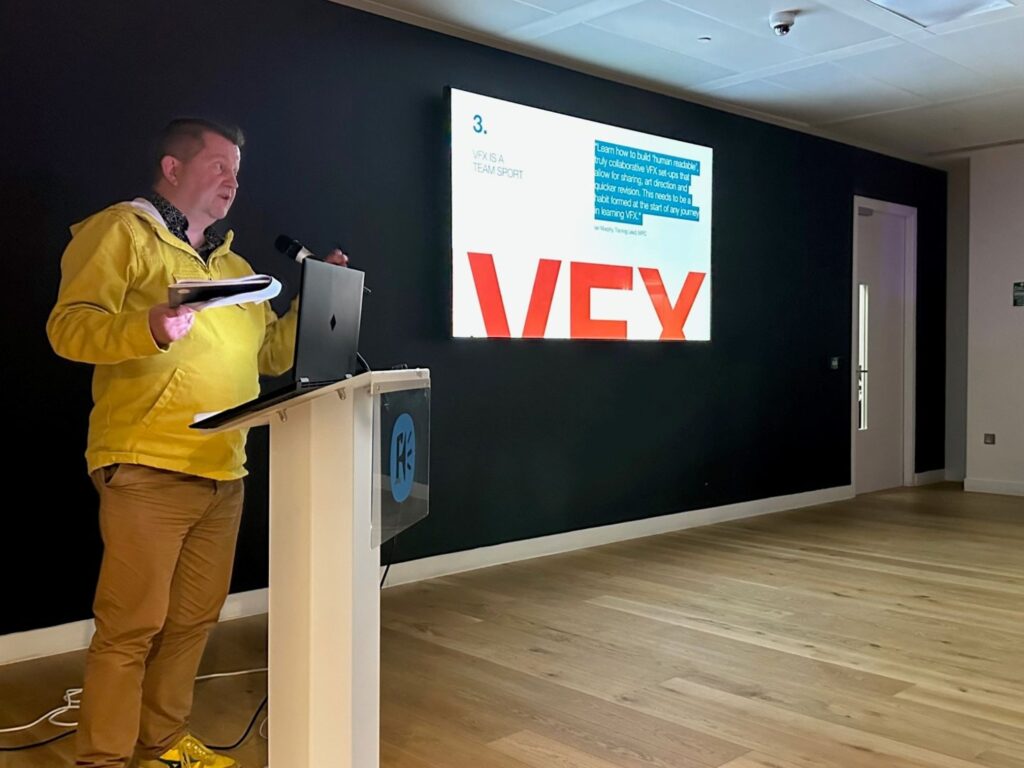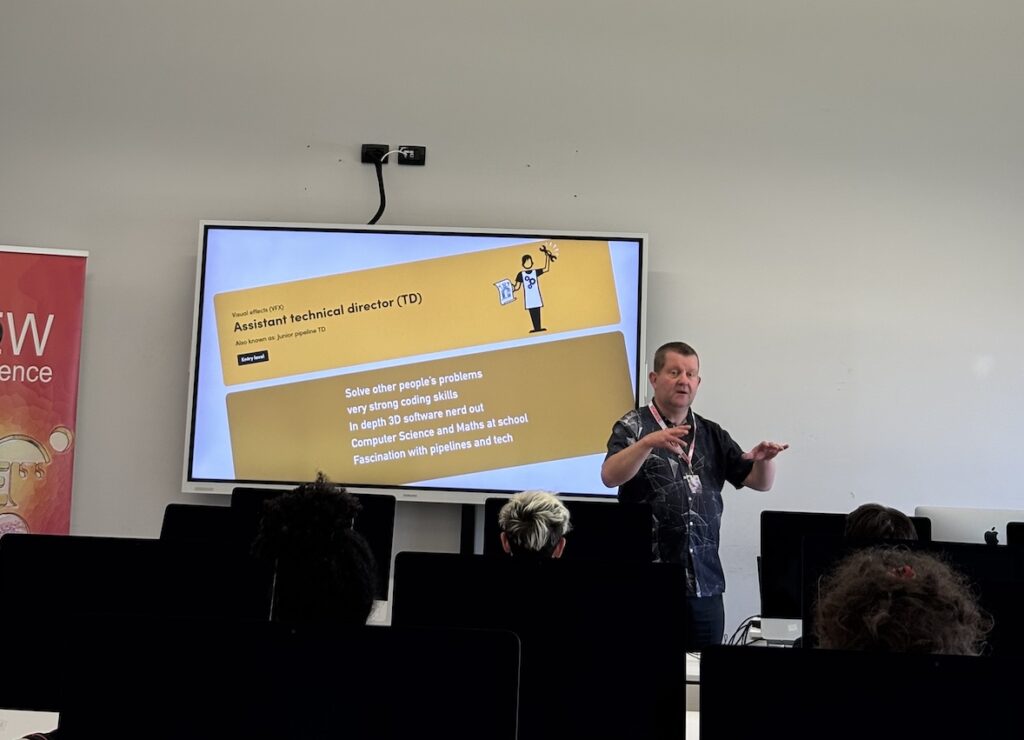GUEST POST: SAINT WALKER
Saint John Walker is the Programme Leader for postgraduate media at the UK’s University of Hertfordshire and a leading VFX educationalist with over 25 years of experience of teaching and training in the games, animation and VFX industries. Most recently Saint was Dean and Director of Industry Engagement at the UK’s Escape Studios and previous to that he designed, initiated and ran the VFX degree course at Norwich University of the Arts for four years. Saint is an active member of Access:VFX.
Photo of Saint courtesy of Viborg Animation Festival.
We all know the VFX industry relies on new talent, but what happens if that talent dries up?
Around 90% of all new entrants come from university degrees, (not all VFX subjects, either, because the industry needs computer science and business skills too, to name just two areas).
However these VFX courses are driven by demand and need a ready supply of school students willing to give a three year slice of their life to study the subject.
To make the right decision when there are lots of choices means they need to be informed enough to know about the value and experience of creating VFX, and the career fulfilment they might deserve. However, it’s not easy to find out about VFX at school, although organisations like Access:VFX and school alumni do great work.
Nevertheless, the current outlook isn’t good. Over the last ten years we’ve seen a reduction of arts courses in schools by around 40% due to a decline in funding, and we need to remember VFX is a small and relatively niche area. The UK Screen Alliance estimated 10,680 full time employees (and 27,430 wider roles) in the UK. Compare that to computing, with 158,340 study applications every year (BCS figures). So, the VFX talent stream is delicate and under pressure, but that’s not all…
Put yourself in the shoes of a young creative student at school. You have heard about and indeed tried some generative AI programmes and been amazed at the quality and ‘cinematic’ look. It occurs to you that this is in some way the future. Wait a minute you think, what kind of career will there be in three years’ time for me? Will there be a place for me in this industry?
Then there’s the SAG/AFTRA strikes in 2023 and how they are still adversely affecting the industry causing a drought in recruitment. The industry hasn’t bounced back in the way everyone seemed to expect. You might appreciate that a bottleneck of work from the screenwriters and actors takes a while to work its way through to post production. You’ve heard industry commentators talking about “Survive to ‘25” which makes you feel nervous. Again, this doesn’t sound like a healthy and resilient industry. The message you are getting is that VFX isn’t a safe investment for your time.
Also let’s assume a friend of your family who used to do something in VFX is now working elsewhere as she was tired of getting laid off after every job, and wanted something more stable, to support their family.
Lastly you may have seen plenty of commentary on YouTube about how VFX isn’t used in films so much. You were surprised to hear there was “no CGI” in Top Gun Maverick or Napoleon for instance.
All these factors are part of a narrative surrounding VFX at the moment. Part of this is that neither industry nor education has traditionally been good at explaining the upside of the industry, the amazing positives of being part of our industry, nor why the cyclical ‘peak and valley’ nature of work sometimes hides the more positive story of longer upward growth and opportunities. Gen Z wants something more than the promise of possibly seeing their name on the credits of a Hollywood blockbuster at the cinema.
The issues I mention above belie many good news stories, but we are not good at articulating this. After all, we’ve been around the block and our transition from education to work was probably pretty straightforward. We didn’t start studying during covid. Our values are different from today’s school and university students.


So, what do we need to do about it?
Well, for a start we need to get better at communicating the wider context of work to schools and colleges, and supporting university messages, based on a consensual central VFX offer. We should promote our community and the fact that we come together in collegiate ways: Access:VFX, Siggraph, The VFX Festival and many online events too.
We should make something of how supportive the industry is, even if you are working remotely (the institution of wellbeing and recognition of mental health strategies does seem like one of the things we should be proclaiming more). We should point out that the invisibility of VFX is a sign of success and VFX ubiquity means a depth of work opportunities (it’s both Bridgerton AND the Marvel Cinematic Universe). Maybe we should do more to promote the people of the industry (at all levels) rather than the spectacle of the work. The power of ‘Near Peers’ is awesome, and we don’t give young people enough opportunities to receive advice from those just a couple of years older than them.
This article started because I recognised, as an educator, students were starting to feel negative about their options in VFX. It’s always a time of doubt for teenagers, but right now is an unusual confluence of events, as I mentioned earlier. This is despite the good news and huge opportunities on the horizon. To address this, I contacted some of the VFX activists and personalities I have the good fortune to know to ask them to say why the VFX industry is still worth studying for. I got answers in the form of video clips from the likes of Klaudija Cermak (Escape Studios), Simon Devereux (Framestore/Access:VFX), Hugo Guerra (Hugo’s Desk), Emma Kolasinska (Lux Aeterna), Sophie Maydon (PXL Talent), Hayley Miller (World VFX Day), Victor Perez (VFX Supervisor), Josh Parks (ILP), and more, and gave a presentation “Studying VFX: Is it Worth it?” at the Viborg Animation Festival and VIEW Conference to students as a result.
Watch Hugo’s video, below:
This kind of exposure is potent and effective. Let’s ensure we communicate to the students of tomorrow in order to maintain the quality of tomorrow’s talent.
Saint John Walker


